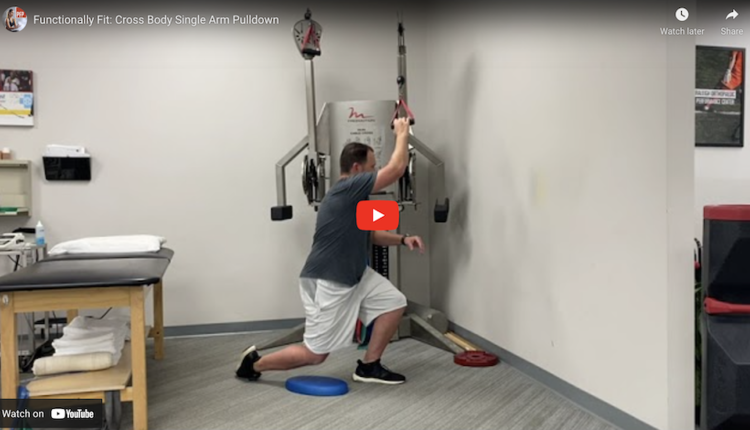Long lever abdominal exercises are popular. However, they also pose a risk for the lumbar spine given the relatively poor abdominal strength/control and lever arm created by momentum and the iliopsoas muscle. The stress on the lumbar spine is high as the leg(s) come back down due to reverse muscle action via the attachment of the iliopsoas on the lower lumbar spine. As a result, this can cause a sizable shear force on the spine. This exercise promotes strength and core or pillar stability through resisting excessive spinal extension.


Execution:
Lie on your back. Grasp the ends of a theraband (anchored around an immovable heavy dumbbell placed on top of a box above and behind the head) in each hand with both arms perpendicular to the body. Next, bring the legs up into a 90/90 position with the feet off the floor. Perform a light chin tuck and find a neutral spine position. Slowly straighten and lower the right leg toward the floor to the lowest point where you can still maintain a neutral lumbar spine. Pause and return to the starting position. Now, perform the same movement on the left leg. Perform 3-5 repetitions on each side and repeat as desired for 2-3 sets.
Progressions:
1. Increase the cadence or time under tension
2. Increase the depth or range of motion (more hip extension)
Regression:
1. Reduce the range of motion (less hip extension)
Application:
This exercise is a safer way to work on abdominal strength and stabilization while minimizing shear forces on the lumbar spine. I would advocate a slower cadence and fewer reps since the goal is anti-extension control and stability. This movement can be performed as part of a core training program or as a pillar prep prior to performing more dynamic activity. Anyone with a history of disc pathology or prior lumbar strain needs to be very cautious and use slow and deliberate range of motion that can be adequately controlled without discomfort.















